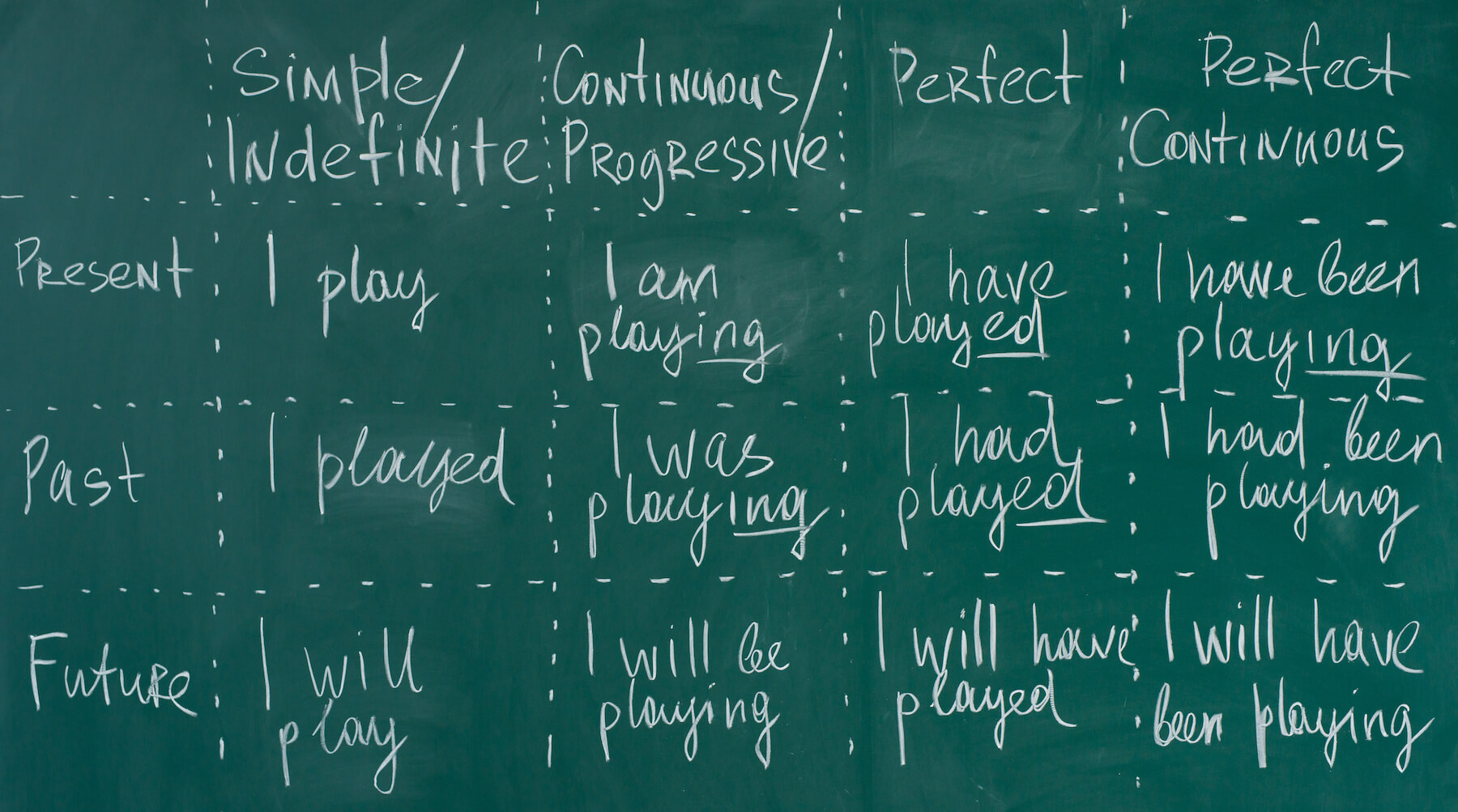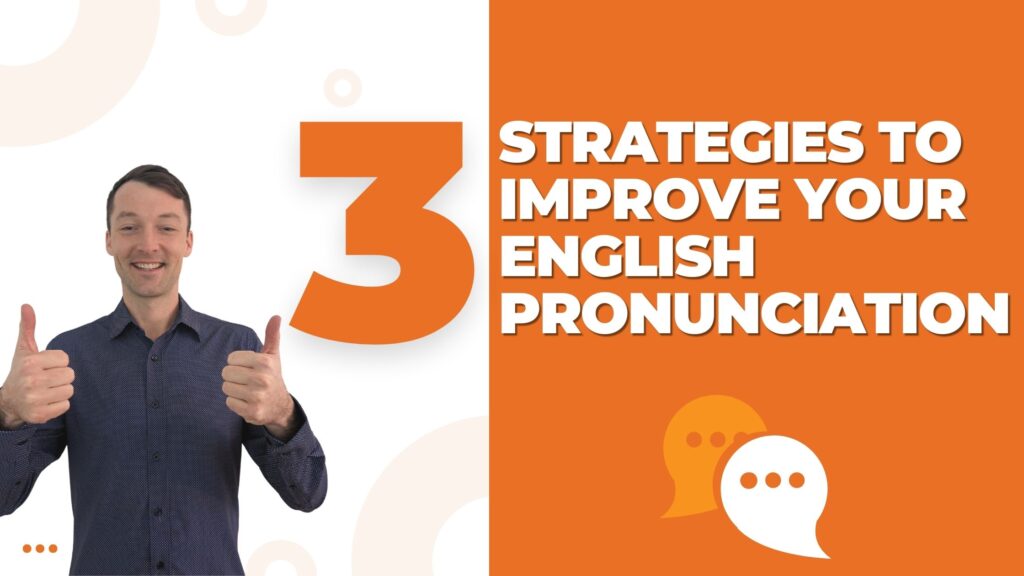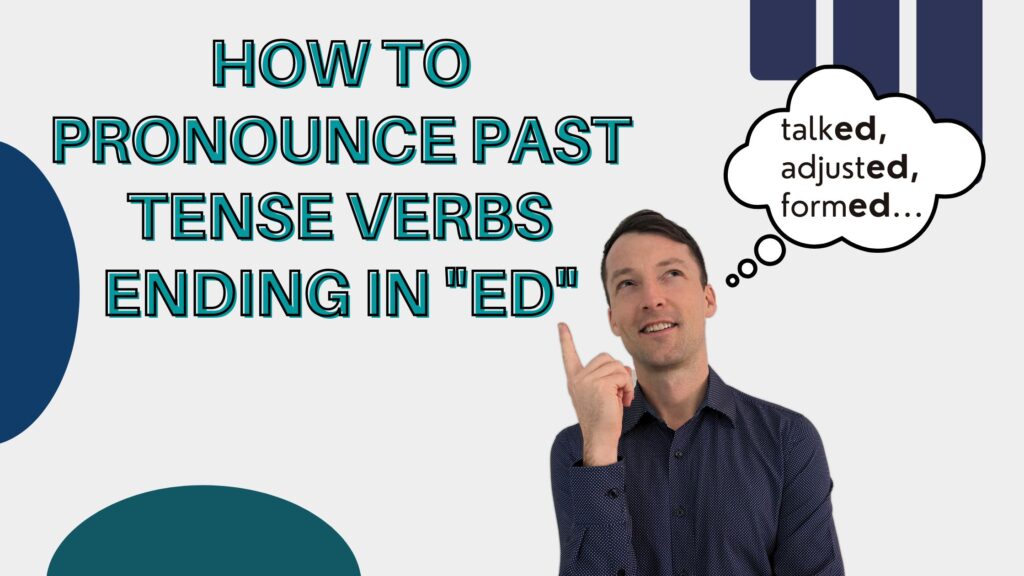English has many tenses, including the simple, continuous, and perfect tenses. These tenses exist in the present, past, and future. In this posting I talk about how to use all theses tenses, how they are similar, and how they are different. There will be many example sentences. It it important to note that in both conversation and writing, we use the simple tenses most often. The download at the end will give you additional practice using the simple, continuous, and perfect tenses in English.
The present
We will look at the simple, continuous, and perfect tenses in the present. We use the simple present most often.
The simple present
We use the simple present to talk about habits and routines we do over and over again.
I go to work every morning. I don’t go to the park. ![]()
Every Tuesday they eat in a restaurant. Joe doesn’t go with them. ![]()
We also use the simple present to talk about facts or give information.
Carlos works downtown. He doesn’t work in an office. ![]()
The United States has a president. It doesn’t have a king. ![]()
The present continuous
The present continuous shows us what is happening right now. It may not be the same as what you do every day.
Right now she is eating breakfast. She isn’t driving her car. ![]()
This year I’m learning to play the piano. I’m not learning to play the drums. ![]()
The present perfect
The present perfect (have/has + the past participle) talks about an action that started in the past, but the action is not yet finished. The action is continuing into the present.
I have worked as a secretary for 8 years. ![]() I started working as a secretary 8 years ago, I still work as a secretary now.
I started working as a secretary 8 years ago, I still work as a secretary now.
I have never worked as a banker. ![]() This includes my whole life up until now.
This includes my whole life up until now.
Have you ever seen the Statue of Liberty? ![]() This includes your entire life up until now.
This includes your entire life up until now.
The past
We can also talk about the past using simple, continuous, and perfect tenses. We use the simple past most often.
The simple past
The simple past talks about and action that happened in the past and is now finished. It is not going on now.
I lived in California for 10 years. ![]() This was in the past. I no longer live in California.
This was in the past. I no longer live in California.
The simple past is also used to give us facts or information about the past.
Abraham Lincoln was the 16th president of the United States. ![]()
Germany didn’t win World War 2. ![]()
Alaska once belonged to Russia. ![]()
The past continuous
The past continuous (was/were + the ing form of the verb), like the simple past, talks about an action in the past that is now finished. This action, however, continued over time. During that time another action happened, often just once. The new action interrupted the continuing action. We express the continuing action in the past continuous, and the new action in the simple past. Look at the following sentences.
While I was living in California, and earthquake struck. ![]() I was living in California over a period of time (past continuous). During that time, there was an earthquake (simple past).
I was living in California over a period of time (past continuous). During that time, there was an earthquake (simple past).
I wasn’t living in California when the city of Paradise burned down. ![]()
When I left work, it was raining. ![]() It has raining over time (past continuous). During the rainstorm, I left work (simple past).
It has raining over time (past continuous). During the rainstorm, I left work (simple past).
It wasn’t snowing when I left work. ![]()
The past perfect
The past perfect (had + the past participle) is also used to talk about an actions that were finished in the past. In this case, though, one action happened earlier than the other. The earlier action takes the past perfect. The later action takes the simple past.
I had already finished eating when she arrived at my house. ![]() First I finished eating (past perfect). Then she arrived at my house (simple past).
First I finished eating (past perfect). Then she arrived at my house (simple past).
I had not yet gone to bed (when she arrived at my house). ![]()
The United States had been independent for many years when World War 1 began. ![]() First the United States was an independent country. Then World War 1 started.
First the United States was an independent country. Then World War 1 started.
The future
We use the simple future more often than the continuous or perfect tenses inn the future.
The simple future
We use the simple future to talk about or predict an action that has not yet happened. However, we expect it to happen in the future.
Tomorrow my son will graduate from high school. He won’t go to college. ![]()
My aunt is going to move to a new house in two weeks. She isn’t going to leave Denver. ![]()
The future continuous
This is the formula for the future continuous:
subject + will be + ing form of the verb
I will be traveling.
The future continuous is used to talk about an action that will happen in the future, but it will continue over time. We express the continuing action in the future continuous. We often pair this action with another action that will happen later in the future. We express this later action in the simple present.
I will be traveling when you get to work tomorrow. ![]() Neither event has happened yet. However, first I will be traveling (future continuous). My travels will continue over time. Then you will get to work (simple present).
Neither event has happened yet. However, first I will be traveling (future continuous). My travels will continue over time. Then you will get to work (simple present).
I won’t be drinking coffee when you get to work tomorrow. ![]()
The future perfect
We do not use the future perfect very often in English. This is how you form it:
subject + will have + past participle of the verb
They will have worked.
We use the future perfect to discuss two events that will happen in the future, one earlier and one later. The earlier even takes the future perfect. The later event takes the simple present.
I will have worked at my job for 2 years when you join our company. ![]() Neither of these events have happened yet. However, I have worked at the company for nearly two years, and I still work there, so that is the earlier action (future continuous). The later action is that you will join the company (simple present).
Neither of these events have happened yet. However, I have worked at the company for nearly two years, and I still work there, so that is the earlier action (future continuous). The later action is that you will join the company (simple present).
I won’t have worked there 3 years (when you join us). ![]()
You now know that you can use the simple, continuous, and perfect tenses in English to talk about all three time periods: the present, past, and future. We use the simple tenses most often. The simple tenses talks about routines or habits, give us information, or make predictions. The continuous tenses talk about actions that continue over time. Finally, the perfect tenses talk about earlier actions followed by later actions. The earlier actions take the perfect tenses, and the later actions take simple tenses. The download will give you additional practice using the simple, continuous, and perfect tenses.
You can download the practice sheet now!
Idioms of the day
- monkey business
 — This means silly or inappropriate (bad or wrong) behavior. Martha told her children not to try any monkey business while they were at the movies
— This means silly or inappropriate (bad or wrong) behavior. Martha told her children not to try any monkey business while they were at the movies - to smell a rat
 — This means to suspect that something is wrong. When Maria saw her husband eating in a restaurant with her best friend, she smelled a rat.
— This means to suspect that something is wrong. When Maria saw her husband eating in a restaurant with her best friend, she smelled a rat.





The idiom of the day above, “to smell a rat” has a typo and reads “to SMALL a rat”.
Good catch! 👍🏼 it’s fixed now!
It’s amazing. I would like regulary to recive somethings about English grammer and in general everything about English from you. Thank you so much !